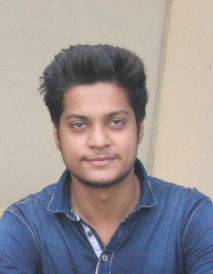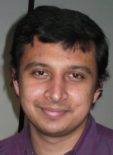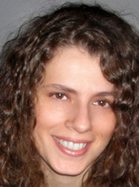Student collaborators of Christian Fendt |

|
|
I am (and also was) happy to collaborate with the following great students. |

| |
| Ravi started his PhD project in February 2022. His topic is the dynamics, the particle acceleration and emission in relativistic jets. This project is in collaboration with the groups of Karl Mannheim in Wuerzburg and Bhargav Vaidya in Indore. It is kindly financed by the DFG research unit FOR5195 on Relativistic Jets in Active Galaxies. |

Ravi Pratap Dubey (India) |

| |
| Giancarlo started his PhD project in October 2018. He main topic was the mean-dynamo action in accretion disks, in particular considering non-isotropic effects of the dynamo tensor. One of his findings are dynamo-inactive zones that establish self-consistently at certain radial locations in the disk. He graduated 2022, and is now a postdoc at the university of Florence. |

Giancarlo Mattia (Italy) |

| |
|
Christos started his PhD research in October 2015.
He had joined the project with Qian on GR-MHD simulations of jet
launching. His thesis was on resistive GR-MHD simulations of jet
launching from thin disks around black holes using (and producing)
the resistive version of the 3D HARM code.a He also implemented a mean-field dynamo in GR-MHD that was able to launch jets from disks and black holes by a dynamo-generated strong magnetic field. Christos graduated 2020, and now works at the SAP company in Walldorf. |

Christos Vourellis (Greece) |

| |
| Dennis started his MSc project in May 2015. He countinues the work by Deniss further investigating the connection between disk dynamos and jet launching using PLUTO, generalizing th eapproach to a bipolar setup. |

Dennis Gassmann (Germany) |

| |
|
Qian started his PhD project in November 2013.
He investigated the launching of jets from black holes and
black hole accretion disks.
He implemented resisitive in the 2D GR-MHD code HARM.
He perfoms GR-MHD simulations using the
HARM
code. We thank Scott Noble for his collaboration and Matteo Bugli
for help concerning the implementation of resistivity in GRMHD. Qian graduated 2017 and is now working as Software developer for Application Innovation Services at SAP. |

Qian Qian (China) |

| |
|
Deniss' started his PhD work July 2011.
He investigated the launching of jets and winds from disks applying a
magnetic field configuration derived from a accretion disk mean field
dynamo.
Deniss' project was funded by the SFB 881 of German Science
Foundation DFG. Deniss graduated 2014 and is now working in Data and Applied Science, Machine Learning, but also is CEO of his own companies. |

Deniss Stepanovs (Latvia) |

| |
| Somayeh started working with me as a guest PhD student March 2010 (she formally graduated from Mashad University in Iran 2012). She investigated MHD launching conditions of jets from accretion disks, applying numerical simulations using the PLUTO MHD code. Somayeh's work has been partly funded by the SFB 881 of German Science Foundation DFG and a stipend by Mashad University. Somayeh graduated 2012 and is now Associate Professor of Computer Science at the Institute for Advanced Studies in Basic Sciences, Zanjan. |

Somayeh Sheikhnezami (Iran) |

| |
|
Oliver started his PhD work August 2008.
He investigated the acceleration and collimation behavior of relativistic
MHD jets. MHD self-acceleration and self-collimation is known and understood for
non-relativistic jets. However, in relativistic MHD and rapid rotation the
electric field becomes important and is usually thought to have a de-collimating effect. Oliver's project is funded by the International Max Planck Research School for Astronomy and Cosmic Physics at the University of Heidelberg (IMPRS-HD). Oliver graduated 2011 and is now Assistant Professor . at the Anton Pannekoek Institute of Astronomyin Amsterdam. We thank Andrea Mignone and collaborators for the opportunity to use the PLUTO MHD code. |

Oliver J.G. Porth (Germany) |

| |
|
Bhargav
started his PhD work August 2008.
He investigated the formation of outflows from massive young stars.
Although we understand the launching mechanism for jets from low mass young
stars reasonably well, the formation mechanism for their high mass siblings
have not yet been investigated. How do the jet-launching disk compare to their low-mass counterparts? High-mass star formation observer Henrik Beuther joined our team as co-supervisor. We thank the Klaus Tschira Foundation (KTS) and the Heidelberg Graduate School for Physics (HGSFP) for funding Bhargav's PhD project. Bhargav graduated 2011 is now Associate Professor at the Discipline of Astronomy, Astrophysics and Space Engineering at the Indian Institute of Technology Indore, and leader of the Max Planck Partner group. Together we have organized the conference Jets2021 on Extragalactic jets on all scales - launching, propagation, termination, initially to be held 2020 in Heidelberg, but then moved online for 2021. |

Bhargav Vaidya (India) |

| |
| Sander did his Master's thesis work under my supervision 2002-2003 when I was postdoc at the AIP in Potsdam. Sander worked on semi-analytical solutions of MHD equations of jet formation considering the force-free Grad-Shafranov equation in Kerr-Metric and also taking into account differential rotation of the magnetosphere. Read more about this in his Master's thesis which was formally supervised by Vincent Icke of Leiden University (and also defended over there). |

Alexander von Benda-Beckmann (Netherlands) |

| |
| Miki did his PhD 1999-2002 when I was postdoc at the AIP in Potsdam. He worked on numerical MHD simulations of protostellar jet formation. After implementing physical magnetic diffusivity into the seminal ZEUS MHD code, Miki investigated the influence of jet magnetic diffusivity on jet acceleration and collimation and also investigated jet launching from the underlying accretion disk. Miki's project was funded by the German Science fundation (DFG), as project DFG/FE490/2-1,2. We thank David Clarke, Mike Norman, and Jim Stone for the possibility to use the ZEUS code. |

Miljenko Cemeljic (Croatia) |

| |
|
Eli did her
PhD thesis 1998-2001 under my supervison
when I was postdoc at the AIP in Potsdam.
She worked on the structure of relativistic MHD jets in particular the
magnetic field distribution when the field lines are rooted in a differentially
rotating disk. For hot plasma ejected in to the jets from the disk she
calculated hypothetical thermal X-ray spectra taking into account
differential Doppler shift and boosting.
Eli's project was funded by the German Science fundation (DFG),
as project DFG/FE490/1-1,2.
Read more about the results in our two A&A publications on the field structure and the X-ray spectra. After her PhD she was a postdoc in Rome, Florence, Harvard, and Milan where she is working up to now (currently at the INFN, Sezione di Milano Bicocca) |

Elisabetta Memola (Italy) |
